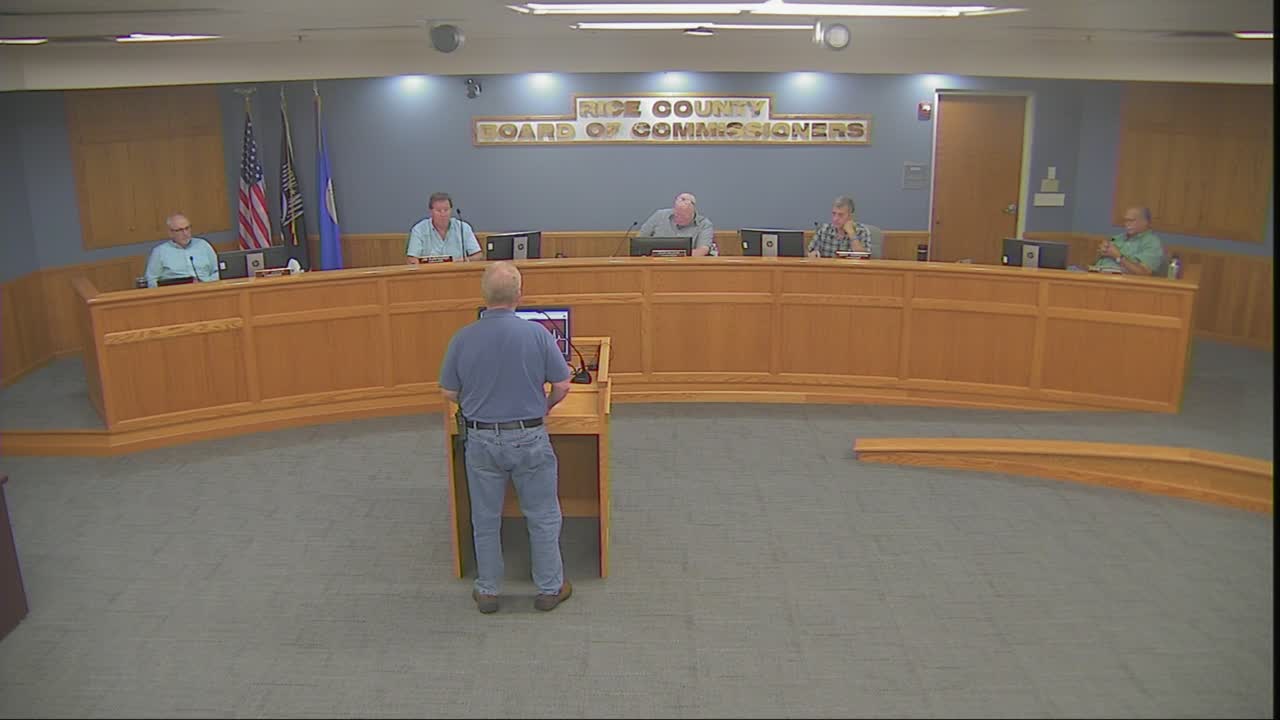Southeast Minnesota EMS program fights to sustain vital services
August 20, 2024 | Rice County, Minnesota
This article was created by AI summarizing key points discussed. AI makes mistakes, so for full details and context, please refer to the video of the full meeting. Please report any errors so we can fix them. Report an error »

During a recent government meeting, the executive director of the Southeast Minnesota EMS office presented a comprehensive overview of the organization’s ongoing initiatives and funding needs as it celebrates its 40th anniversary. The Southeast Minnesota EMS office serves an eleven-county area, focusing on ensuring quality patient care through education and training for emergency medical services (EMS) and public education efforts.
A significant highlight of the presentation was the Medical Direction Consortium, which marks its 30th anniversary this year. This program was established to address the shortage of medical directors in rural areas, where many small communities have seen a decline in local physicians. The consortium currently supports 16 ambulance services and 41 first responder agencies, providing standardized training and essential medical oversight. The director emphasized that without continued funding, these services could face operational challenges, as finding medical directors for rural ambulance services remains a critical issue.
The meeting also addressed the importance of mental health support for EMS personnel through the Critical Incident Stress Management program. This initiative aims to assist first responders in coping with the emotional toll of their work, particularly following traumatic incidents. The program has seen participation from approximately 359 individuals in the past year, highlighting the ongoing struggle to retain personnel in the EMS field, exacerbated by the impacts of the COVID-19 pandemic.
Additionally, the Southeast Minnesota EMS office offers various educational programs, including advanced training in airway procedures and heart anatomy in collaboration with Mayo Clinic. The organization also provides Narcan training and resources to local fire departments and community initiatives, adapting to legislative changes that now require law enforcement officers to carry Narcan.
Overall, the meeting underscored the critical role of the Southeast Minnesota EMS office in maintaining emergency medical services in the region, advocating for continued support and funding to ensure the sustainability of these vital programs.
A significant highlight of the presentation was the Medical Direction Consortium, which marks its 30th anniversary this year. This program was established to address the shortage of medical directors in rural areas, where many small communities have seen a decline in local physicians. The consortium currently supports 16 ambulance services and 41 first responder agencies, providing standardized training and essential medical oversight. The director emphasized that without continued funding, these services could face operational challenges, as finding medical directors for rural ambulance services remains a critical issue.
The meeting also addressed the importance of mental health support for EMS personnel through the Critical Incident Stress Management program. This initiative aims to assist first responders in coping with the emotional toll of their work, particularly following traumatic incidents. The program has seen participation from approximately 359 individuals in the past year, highlighting the ongoing struggle to retain personnel in the EMS field, exacerbated by the impacts of the COVID-19 pandemic.
Additionally, the Southeast Minnesota EMS office offers various educational programs, including advanced training in airway procedures and heart anatomy in collaboration with Mayo Clinic. The organization also provides Narcan training and resources to local fire departments and community initiatives, adapting to legislative changes that now require law enforcement officers to carry Narcan.
Overall, the meeting underscored the critical role of the Southeast Minnesota EMS office in maintaining emergency medical services in the region, advocating for continued support and funding to ensure the sustainability of these vital programs.
View full meeting
This article is based on a recent meeting—watch the full video and explore the complete transcript for deeper insights into the discussion.
View full meeting
